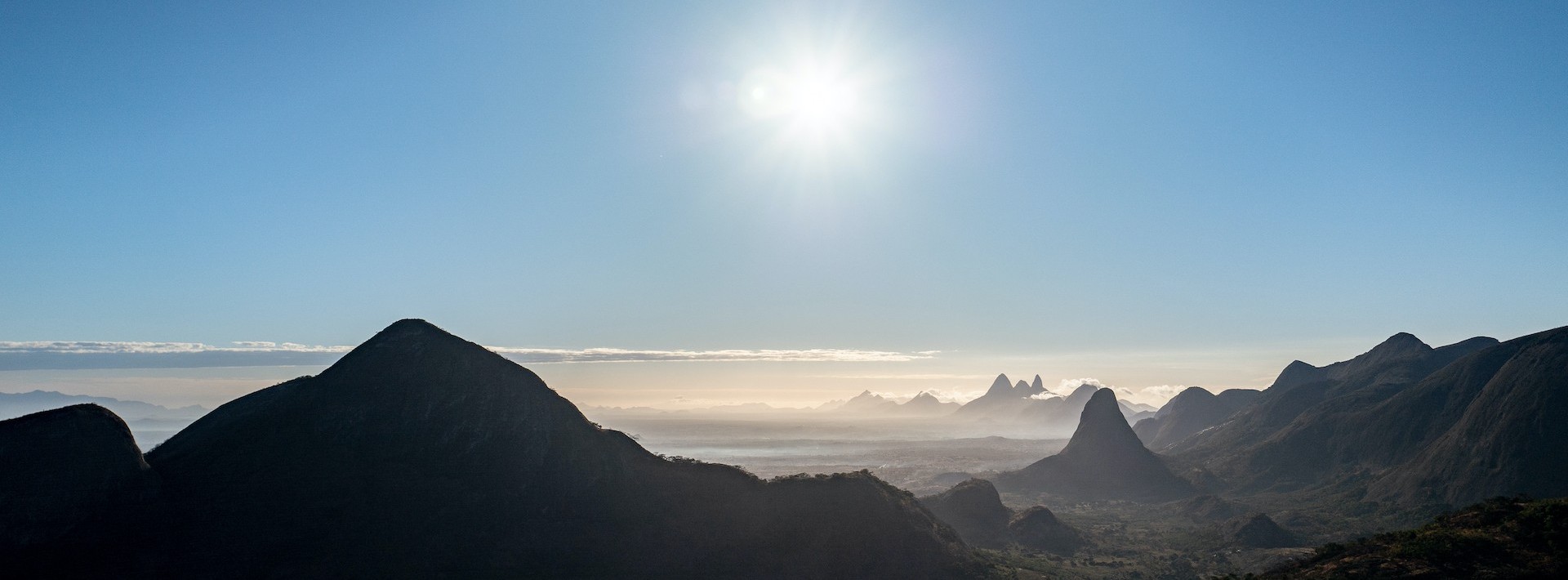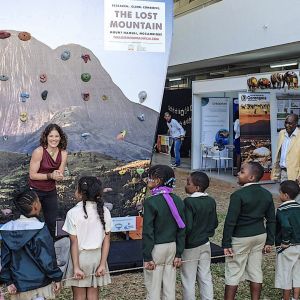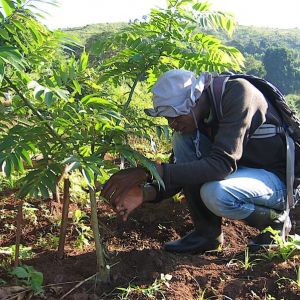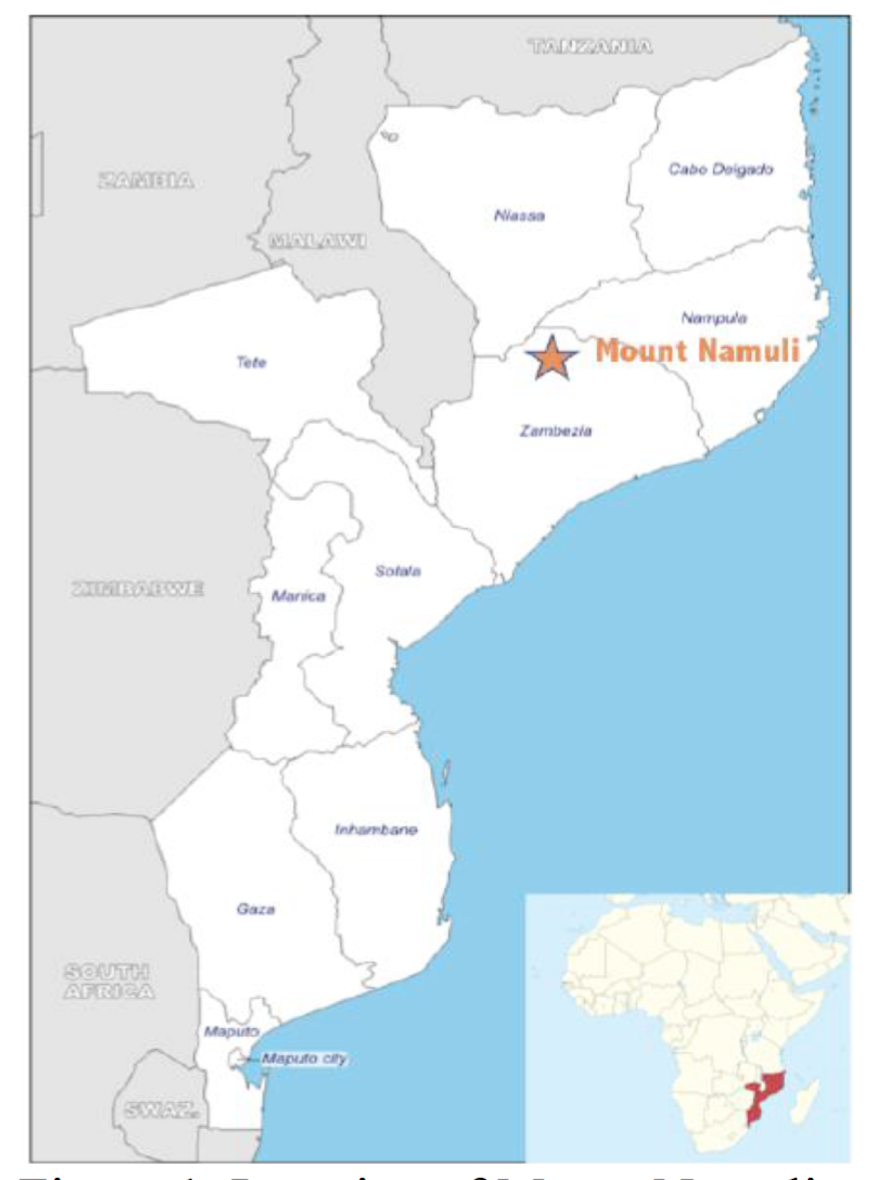In Brief
Conservation Value:
Mozambique's Sky Islands are biodiversity hotspots and are important for seeding clouds and producing rain needed by communities living at lower altitudes. Central to this system, Mount Namuli rises as the nation’s second tallest peak (2,419 m) and supports patches of high altitude forest and numerous endemic, range-restricted and threatened species. Mount Namuli is designated as a Level 1 Priority Key Biodiversity Area by the Critical Ecosystem Partnership Fund, an Important Bird Area, an Important Plant Area, and an Alliance for Zero Extinction Site. Despite these distinctions, the area lacks formal conservation protection. (More below in "In More Depth" section.)
Threats:
The lower elevation areas that surround Mount Namuli and Mount Ribaue are settled and intensively cultivated. Although there are no settlements in the highest reaches of the mountains, some potato farmers have started to clear upland forests in recent years. Overall forest cover has been reduced by one-third in the past ten years, a rate of clearing that would expunge the remaining forest within eight years. Another threat is uncontrolled fires resulting from slash and burn agricultural practices. Over-hunting also needs to be regulated.
Actions & Results:
The program, in which ICFC is supporting the training component, entails developing Mozambique’s first community-managed conservation areas. These are designed to protect biodiversity and ecosystem services of the core area, implement agricultural best practices to minimize erosion and support water retention, and provide durable livelihood options for Namuli’s communities. Specific objectives:
- Train community members in villages around Mount Namuli and Mount Ribaue to be leaders in natural resource management
- Develop consensus on incentives that will enable a full moratorium on tree cutting above a given elevation
- Develop a conservation agreement with the communities to protect Mount Namuli and Mount Ribaue ecosystems from degration
Goal:
To conserve the vital biodiversity, cultural, and ecosystem service values of Mount Namuli and Mount Ribaue.
This project is fully funded at present.
(Support is welcome for other projects)
Location:
Mount Namuli: North-central region Mozambique (Province of Zambezia, 100 km east of Malawi); and Mount Ribaue: Province of Napula, 100 km northeast of Mount Namuli
Size of Area Involved:
Mount Namuli: Core zone: 5,600 ha, Transition zone: 47,300 ha. Mount Ribaue: Core zone: 3,400 ha forest at 550-1,675 m elevation.
Project Field Partner:
Our Investment to Date:
Cost to ICFC 2018-2022: CA$186,911
Gallery
Click to enlarge an image
Video
This short film discusses the crucial role of Mount Namuli forests in providing water.
In More Depth...
Legado’s Sky Island Program:
A Sky Island is a mountain that has exceptionally high biodiversity in an exceptionally small area. Legado’s mission is to preserve these Sky Islands by working hand-in-hand with the people who call them home. Sky Islands are also home to mountain communities working to create a life for their families. Their current mechanisms for survival— slash and burn agriculture as well as timber harvesting — are both undermining the long term security of their home and their future, and compromising site after site of the world’s biodiversity hotspots. Sky Islands are also critical for seeding clouds and producing rain. Protecting Sky Islands is one of the best ways to secure our world’s water towers in the face of climate change. Legado’s work has begun in Mozambique, and, in 2020, is expanding in Sky Islands in Africa and beyond.
Central to this system, Mount Namuli rises as the nation’s second tallest peak, reaching 2,419 m (nearly 8,000 ft.) and supports patches of unique high altitude forest and numerous endemic, range-restricted and threatened species. Mount Namuli is designated as a Level 1 Priority Key Biodiversity Area by the Critical Ecosystem Partnership Fund, an Important Bird Area, an Important Plant Area, and an Alliance for Zero Extinction Site. Despite these distinctions, the area lacks any formal conservation protection.
The Namuli massif covers an area of roughly 200 km2 at elevations above 1,200 m. Incorporating a complex of granitic inselbergs (think… islands in the sky) linked by the high Muretha Plateau. Recognized as one of the most important biodiversity areas in the country, the habitats are a mosaic of East Afromontane Ecosystem forest and grassland communities above 1700m, interspersed by shrublands, shallow soil plant communities with smooth rock peaks.
Mount Ribaue, in northeastern Mozambique, is home to both critical biodiversity and key communities of people working to make a life for themselves and their family. Ribaue is the first Tropical Important Plant Area to be designated in Mozambique and as a Sky Island makes up less than 3% of Mozambique landmass while being home to 30% of its biodiversity.
The Namuli massif (roughly 200 km2 in area at elevations above 1,200 m) is recognized as one of the most important biodiversity areas in the country,. The habitats are a mosaic of East Afromontane Ecosystem forest and grassland communities above 1700 m, interspersed by shrublands, shallow soil plant communities with smooth rock peaks.
Mount Ribaue, in northeastern Mozambique is the first Tropical Important Plant Area to be designated in Mozambique and as a Sky Island makes up less than 3% of Mozambique landmass while being home to 30% of its biodiversity. It also supports the human communities living there.
International Conservation Fund of Canada Copyright © 2009-2025
Registered Canadian charity # 85247 8189 RR0001














